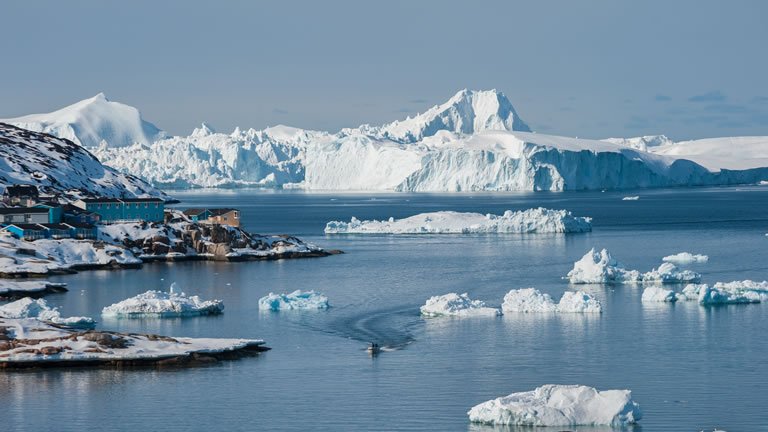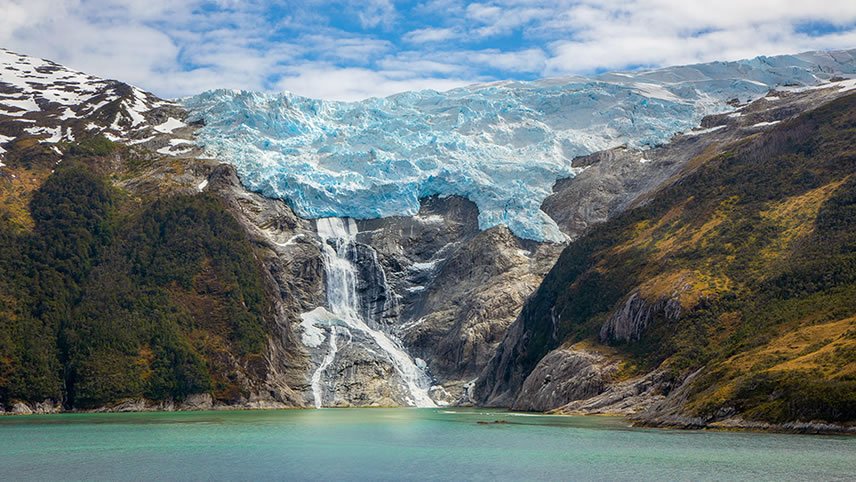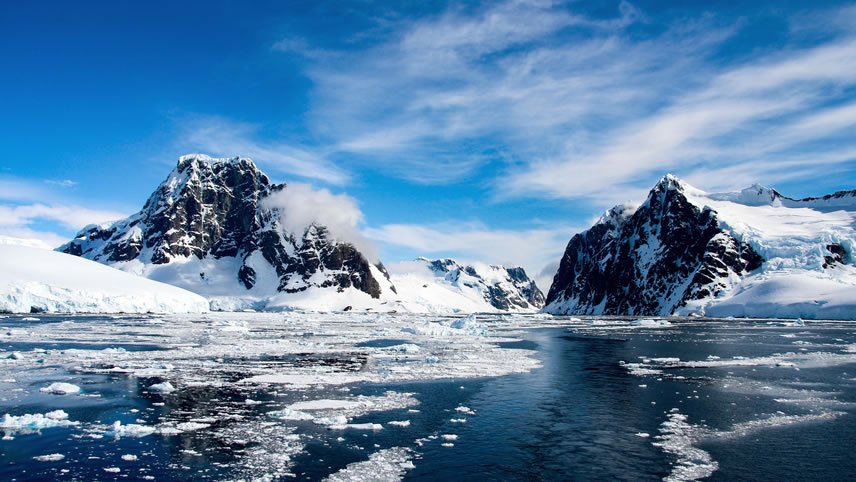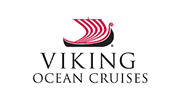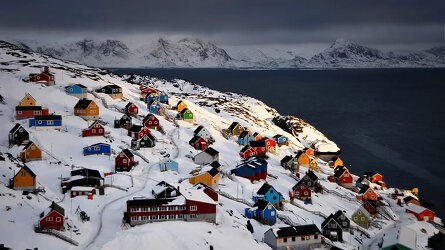
Overview
Itinerary
Embark your ship and settle into your stateroom. Cosmopolitan Nuuk is Greenland's capital city and one of the smallest in the world, with just 16,000 residents. Located on the southwest coast, the city is home to one of the world's largest fjords, the Nuup Kangerlua Fjord, whose waters are brimming with marine life; whale sightings are commonplace in these waters. Visitors to Nuuk come to enjoy nature, hiking along the dramatic coastline or exploring the fjord by boat or kayak. Its rugged landscape is dotted with colorful houses, set amid a beautiful backdrop of the Sermitsiaq mountain.
Nuuk's first Inuit settlers arrived on Greenland's shores from the Canadian Arctic approximately 4,500 years ago, and its people have long celebrated their indigenous roots. In the city's boutique stores, knitwear designs are woven with Inuit patterns and local art showcases the blend of modern Danish and traditional cultures. The city's architectural highlights are centered around Colonial Harbor, with its plethora of colorful residences. Nuuk's showpiece however is the Katuaq Cultural Center, which was inspired by the northern lights and surrounding mountain landscapes.
Greenland's west coast is one of the Arctic region's spectacularly scenic highways and a favored transportation route for Greenlanders. Iceberg-filled waters drift past changing landscapes, evoking experiences that were once followed by intrepid explorers for centuries. Alfred Wegener, largely regarded today as the founding father of the theory of continental drift, participated in several expeditions to Greenland. His journey provided the inspiration for John Buchan's 1933 novel, A Prince of the Captivity.
Home to a rich Arctic heritage, Ilulissat sits along pristine waters at the mouth of its namesake ice fjord. The town's colorful houses enjoy a front row seat as icebergs drift by. This endless parade of white floating islands, long studied by glaciologists, has earned the ice fjord status as a UNESCO World Heritage Site. The fjord is fed by the Sermeq Kujalleq—one of the fastest moving glaciers in the world, producing massive icebergs that can be seen drifting out to sea. The town is named for its spectacular scenery; Ilulissat is the local Kalaallisut word for icebergs.
Founded in 1758, the town's heart-shaped mountain looms over the rugged landscape and casts a red-hued glow during summer, thanks to the ever-present midnight sun. Historic buildings line the harbor and the town's history is well-documented at the Uummannaq Museum. The oldest human remains in Greenland were discovered here, preserved for more than 500 years. The Museum pays tribute to Alfred Wegener, who set sail from these shores for his final expedition in 1930. He died on Greenland's ice cap after successfully delivering supplies for a rescue mission.
Sail Baffin Bay, named after Lieutenant William Baffin, who traversed these waters in May 1616. It is an important part of the Arctic ecosystem, covered in sea ice for much of the year, with floating remnants during summer. As you sail today, relax in the Explorers' Lounge, inspired by epic journeys of discovery. Marvel at the views through the two-story panoramic windows as you share a cocktail with friends, or settle down to read a book.
Pond Inlet sits on the northern shores of Baffin Island at the eastern entrance to the famed Northwest Passage. Home to a small but vibrant Inuit community, it is nicknamed the 'Jewel of the North,' the surrounding Arctic landscape a panoramic mix of glaciers, icebergs and rugged mountains. Pond Inlet is also a gateway to Sirmilik National Park, 'the place of the glaciers' in the local language. Covering more than 8,400 sq mi, the park is a declared migratory bird sanctuary and supports an array of Arctic wildlife, including polar bears, wolves, narwhals and beluga whales.
A region of raw natural beauty, the Canadian High Arctic is characterized by extremely cold temperatures and extended periods of darkness. Explorers long sailed the treacherous waters in search of the famed Northwest Passage; historic Beechey Island is the final resting place for members of the ill-fated Franklin Expedition. Dundas Harbour was once a remote outpost for the Royal Canadian Mounted Police, and became a base for various Arctic expeditions, while Cape Hay features dramatic coastal cliffs, sweeping vistas and unique Arctic wildlife.
Learn about the array of marine life in Baffin Bay, a feeding ground for fish, birds and mammals, including the Arctic cod, Greenland halibut, seals, thick-billed murres and bowhead whales. As you sail today, attend an informative lecture or watch a film on our 8k laser-projected panoramic screen in The Aula, one of the world's most advanced venues for learning at sea. This indoor-outdoor experience allows nature to take center stage with its retractable floor-to-ceiling windows that unveil 270° views.
Greenland's second-largest city is regarded as a gateway to adventure. The town is surrounded by soaring mountains and wide glacial valleys, and a number of beautiful hikes can be enjoyed offering scenic vistas. Several open-air exhibits are on display at the Sisimiut Museum, as well as a collection of 18th- and 19th-century old buildings, the entrances to which are marked by a set of whale jawbones. Traditional kayaks can be seen along the shores, exploring the region as the Inuit do. The origins of the word kayak come from the Greenlandic word qajaq.
Greenland enjoys a diverse food scene and the country's capital encourages visitors to fully embrace the gourmet dining experiences on offer. With most of the country covered in ice, traditional Greenlandic cuisine heavily features seafood, fish and meat. In restaurants serving traditional fare, Suaasat will commonly be found on the menu—a tasty stew of potatoes, onion, rice or barley and meat. A selection of cafés and eateries offer tasting plates or tapas-style dishes, providing a sampler of local delicacies to enjoy, alongside international favorites.
Located at the far end of the Nuuk Fjord, Kapisillit is a quaint village in a sprawling bay with a scenic mountain backdrop. Amid its blue-tinged waters, icebergs drift along as they make their way along the Nuuk Icefjord to the ocean. Several hiking trails weave their way from the town toward the backcountry and along the Kapisillit River, a popular spot for local salmon fishing. It is the only known location in Greenland with a spawning salmon population, and the species found in these waters cannot be found anywhere else in the world.
A small town with a tiny population, Paamiut's residents are friendly and welcoming. The town's local museum is working to restore its 11 historic buildings, including the wooden stave church that was built in 1909. Traditional peat houses can also be explored to gain a glimpse into life here when the early Inuit settlers arrived; they were used to shelter from the extreme winter conditions. Paamiut is also home to the largest population of white-tailed eagles. Majestic in flight, their prowess is a celebrated symbol with youth teams sporting the bird as a lucky mascot.
Ivittuut was founded during the 10th century by medieval Norsemen. By the 19th century, the town was enjoying an economic boom due to its cryolite deposits. The mineral's properties were used to refine aluminum and were integral in the manufacturing of fighter planes. At its peak during World War II, the mine was protected by the Allied forces, with more than 85,000 tons of cryolite being shipped to the US and Canada. It was mined here until 1987 and the community was abandoned soon after. Today, several preserved buildings remain, as well as relics from the town's past.
Follow in the footsteps of intrepid Viking Leif Eriksson who famously crossed this stretch of water to become the first European to land on North American shores. Enjoy the amenities of your ship as you sail. Perhaps take a breath of fresh air on a brisk walk around the Promenade or begin your day with a workout in the well-equipped Fitness Center.
Battle Harbour is a small 19th-century village located on a remote island off the coast of Labrador. A vibrant hub for the cod fishing industry from the late 19th to the early 20th centuries, it later fell into economic decline and was abandoned during the decades following a devastating fire in 1930. Today, the island's rugged landscape offers a striking backdrop to the well-preserved heritage structures that dot the restored village serving as a living museum, including narrow boardwalks, traditional saltbox houses and fishing stages.
Red Bay is a small fishing village that sits on a natural harbor on the southern coast of Labrador. Named for the red granite cliffs that dominate the region, the area was a significant Basque whaling station during the 16th and early 17th centuries. Today, the town is both a National Historic Site of Canada and a UNESCO World Heritage Site, offering visitors a glimpse into the past with its well-preserved whaling artifacts, including a whaling ship, the Basque cemetery and a reconstructed 16th-century whaling complex.
Gros Morne National Park is a UNESCO World Heritage Site located on the west coast of Newfoundland. Crisscrossed by hiking trails, the expansive park covers an area of almost 700 sq mi and features diverse scenery and ecosystems, including soaring fjords, rugged mountains, dense forests and coastal lowlands. At 2,600 feet, Gros Morne Mountain towers over its surroundings, while the barren landscape of Tablelands highlights unique geological formations that are more than a billion years old. The park is home to a variety of wildlife, including moose, caribou and black bears.
Havre-Saint-Pierre is located on the northern shore of the Gulf of St. Lawrence, north of the Anticosti Island. Settled by fishermen from the Magdalen Islands in 1857, residents refer to themselves as Cayens and proudly celebrate their Acadian heritage. Historically focused on fishing and lumber, today the village serves as a transit port for ore brought from the mines of Lac Allard. Nestled among the stunning landscapes of the Canadian Shield, this region is a renowned for its diverse flora and fauna, as well as its mysterious, weather-eroded 'monoliths.'
Tadoussac is a small village in the Côte-Nord that sits at the confluence of the St. Lawrence River and the Saguenay Fjord. Established as an important trading post by French explorers in 1599, Tadoussac still retains its rural charms to this day. Surrounded by the rugged natural beauty of the fjord, it is close to several natural and provincial parks, as well as Canada's first maritime national park. A dozen whale species, such as minke, humpback, fins and blue whales, frequent the waters of Tadoussac Bay during the summer months, while beluga whales live here year-round.
Quebec City is by many accounts the most French city in New France. The Old Town's centerpiece, the magnificent Château Frontenac, seems transported from the palatial landscapes of the Loire Valley, and its French-accented streets lead past white-stone buildings that evoke old-world medieval villages. The only remaining walled city in North America outside of Mexico, Quebec City was fortified in the 17th century soon after its founding in 1608. Its strategic setting on the rocky promontory of Cape Diamond gave troops a close view of the St. Lawrence.
Trois-Rivières is the cultural center of Quebec's Maurice region. This picturesque city was established in 1634, the second—after Quebec City, in 1608—to be permanently settled in New France. With its strategic location, it played an important role as all eyes looked west to trade fur with the First Nations peoples. “Three Rivers,” the city's anglicized name, is located at the point where two islands in the Saint-Maurice River break the waterway into three channels before it spills into the St. Lawrence. Today, stately century-old buildings form the core of the Old Town.
A brilliant feat of engineering, the St. Lawrence Seaway comprises a series of locks, canals and channels that allow ships and goods to travel from the Atlantic Ocean up the St. Lawrence River to Lake Superior. Seven locks point the way between Montreal and Lake Ontario, detouring past rapids and several dams. The 27-mile Welland Canal lifts ships over the Niagara Escarpment to Lake Erie, sidestepping Niagara Falls. The Canadian-and American-operated waterway is known locally as “Highway H2O” for the traffic and trade it allows.
Toronto is beloved by many as one of Canada's boldest and most innovative capitals. Hugging the shores of Lake Ontario and facing the picturesque Toronto Islands, it was founded by British loyalists fleeing the American Revolution in 1793. Today the city is a pleasure to explore on foot, whether strolling past the Victorian bay-and-gable homes of Rosedale, or the historic enclave of Wychwood Park, an Ontario Heritage Conservation district. The city's Distillery District is home to North America's largest preserved collection of Victorian industrial architecture.
Toronto is home to a wealth of diverse cultures that each bring their own customs, traditions and food to this cosmopolitan city. More than half of the population were born outside of Toronto and the city's districts represent all corners of the globe; Greektown, Little Italy, Koreatown and Chinatown offer a literal taste of the city's renowned ethnic communities. One of Toronto's historic treasures is St. Lawrence Market, which first operated here in 1803. Today, everything from fresh farmers produce to antiques grace the stalls of its vendors.
Toronto boasts a number of green spaces along its shores. The Toronto Islands, an archipelago of 15 islets, is an idyllic locale to enjoy the outdoors and witness local wildlife; its surrounding waters are best explored by kayak. The adjacent Tommy Thompson Park, an artificial headland, is a tranquil oasis outside of the city center. Farther along the coast, the Scarborough Bluffs along the shores of Lake Ontario offers spectacular scenery with its wooden bridges, inland ponds, and the opportunity to learn about the conservation efforts of Canada's largest city.
The St. Lawrence Seaway was officially opened by U. S President Dwight Eisenhower and Her Majesty Queen Elizabeth II on June 26, 1959. A ceremonial sailing took the Royal Yacht Britannia through the seven locks of the Montreal to Lake Ontario section of the seaway, raising the vessel to more than 245 feet above sea level, calling at five Canadian cities and two American ports. Today, it is considered one of the most important trade routes in the world.
Trois-Rivières had been frequented by the Algonquin and Abenaki peoples for millennia, due to its warmer season climes and abundance of food resources. During the summer months, they would spend their time fishing, hunting and foraging for roots and nuts. Fast-forward several centuries, the islands at the confluence of the three rivers are prime locations to enjoy the outdoors and boost numerous trails for hiking and cycling. Today, the city enjoys a thriving economy through its technology sector, supporting the local green economy with wind turbine manufacturing.
Quebec City represents one of the oldest European settlements in North America. The provincial capital is equally renowned for its impressive architecture as it is for its breathtaking natural surroundings.
Following a visit in 1842, the novelist Charles Dickens even likened it to the splendors of Gibraltar. Among the best places to take in this picturesque setting is the Dufferin Terrace. Built in the late 19th century, the wooden boardwalk stretches along the foot of Château Frontenac and affords sweeping vistas of the quaint Lower Town and St. Lawrence River.
Saguenay is one of southern Quebec's most cosmopolitan cities. It consists of three boroughs: Jonquière, Chicoutimi and La Baie. Once neighboring towns, they were merged to form the present-day city in 2002. Except for some Inuit and Cree villages, there are no towns due north between Saguenay and the Arctic. Like so many Canadian cities founded amid woodland, Saguenay grew its pulp and paper trade with the late 19th century arrival of the Canadian National Railway. Since then, this resilient town has recovered from a great fire, a landslide and a flood.
Sept-Îles—French for 'Seven Islands'—faces the Gulf of St. Lawrence from its northern shore. The city is named for the archipelago it faces. Basque fishermen arrived here to take advantage of the gulf's whaling and cod fishing followed in 1535 by Jacques Cartier, who called the archipelago the 'Round Islands.' Fur trade began during the following century. Before that, the First Nations Innu people called this area home for centuries and still today are a major cultural influence, embracing their spiritual bond with the natural world that surrounds their city on the water.
The village of Cap-aux-Meules—or Grindstone Cape—was named for the headland on Grindstone, one of Quebec's 13 Magdalen Islands. Its French moniker, rarely used in English, is nonetheless its official name. This is the second largest of the Magdalens by area, a low-lying expanse ringed by rugged shores that was inhabited by the Mi'kmaq tribe when they came on a seasonal walrus hunt. The first European to step on this land was Jacques Cartier in 1534. Today, some islanders are descendants of shipwreck survivors and live in houses built out of wood retrieved from the waters.
Prince Edward Island evokes the simplicity of Canada's maritime life, a fertile mix of fishing and farming. In the capital of Charlottetown, tree-lined streets shade restored 19th-century mansions and tidy green parcels dot provincial squares. The island has been molded by rich Scottish and French heritages, as evidenced by the traditional ceilidh, or kitchen party, that still unites friends and neighbors. Besides its picturesque landscapes, the island's biggest draw might be the farmhouse that inspired Lucy Maud Montgomery to write her famous novel Anne of Green Gables.
Sail the Atlantic Ocean, divided in half, north to south, by the Mid-Atlantic Ridge. Longer than the Rockies, the Himalayas and the Andes combined, this underwater mountain range is the longest on Earth. Renew your body, mind and spirit in our Scandinavian-inspired Spa, a Nordic sanctuary of holistic wellness, today while at sea. Whether you unwind in the Sauna, refresh in the Snow Grotto or take a dip in the Thermal Pool, you will feel recharged and revitalized.
Halifax exudes a fine European air and lies along the edge of the Atlantic Ocean. Visitors by sea are greeted by the 1758 Sambro Island Lighthouse, the oldest surviving beacon in North America. In the harborside Historic Properties district, grand and charming stone buildings built in the 18th and 19th centuries grace the cobblestone streets. The city grew up around Citadel Hill, where Fort George protected the harbor. The fortress, along with the adjacent stately Halifax Town Clock, has been gloriously restored and preserved.
Sail legendary waters, where medieval Europeans believed “there be dragons” beyond the ocean's horizon. Meet fellow guests and listen to the soothing sounds of classical music in the Living Room, an ideal setting for relaxation. Enjoy a cup of coffee or sip on a refreshing cocktail.
New York City is at once romantic and exhilarating. From the robust streets of Lower Manhattan's financial district to the intimate warrens of Greenwich Village, the city overflows with culture, cuisine and architectural beauty. New York is for everyone. Music lovers marvel at Carnegie Hall or catch a 1920s-style jazz and blues show in Harlem. Romantics board a horse-drawn carriage in Central Park. Art lovers browse the Museum of Modern Art or the Guggenheim. And theatergoers attend the greatest shows in the world on Broadway, amid the glitter of Times Square.
The nutrient-rich waters of the Atlantic Ocean are home to more than half of the world's fisheries, annually providing millions of tons of fish and other marine species for human consumption and industrial purposes. As you sail, explore our well-curated Library, tucked in a private alcove of the Living Room, and select from a broad range of titles. Read a book by the Main Pool, a calming oasis in any weather with its retractable roof, allowing for year-round swimming.
San Salvador, part of the Bahamas archipelago, is a hidden gem blessed with natural beauty and historical significance. Its pristine white sandy beaches and clear waters paint a serene landscape. The island's diverse marine life, from shallow-water coral reefs to blue holes, entices both divers and snorkelers alike, while its untouched landscapes full of lush coastal areas and serene cays attract nature enthusiasts seeking tranquility. According to some historical accounts, the island was also the site of Christopher Columbus's first landfall in the Americas in 1492.
Man of War Bay is nestled within the serene expanse of the largely uninhabited Great Inagua Island. It boasts a captivating landscape, where turquoise waters lap white-sand shores, framed by lush greenery and rugged terrain. Surrounded by mangroves and saltwater flats, the bay nurtures a diverse ecosystem. Its pristine waters harbor an array of marine life, including vibrant corals and tropical fish. The surrounding wetlands are home to numerous bird species, notably flamingos, which flock to the bay's shores, creating a picturesque scene with their striking pink plumage.
Port Antonio is the capital of Portland Parish and is home to some of Jamaica's most stunning beauty spots. Visitors can enjoy nature in the island's lush rainforests, or soak up the vistas from the shores of one of Jamaica's pristine beaches; Frenchman's Cove Beach and San San Beach are renowned for their stunning beauty and are ideal spots to while away a tranquil afternoon. The island's iconic Blue Lagoon offers a unique bathing experience due to its mix of hot and cold waters, fed by an underwater spring, and provides the perfect place to snorkel or swim.
Sail through turquoise waters where legends of marauding pirates, swashbucklers and tales of hidden treasures were born. Linger on the Sun Deck of your veranda for vistas of azure and turquoise as you sail through some of the world's most beautiful waters. Perhaps you will take a dip in the Infinity Pool or stroll the Promenade Deck.
The Panama Canal connects the Pacific and Atlantic Oceans, crossing the narrowest stretch of the Isthmus of Panama. A full transit through the 48-mile-long canal takes around eight to ten hours and passes through the Gatun Lake and the Culebra Cut, an artificial valley that runs through the Continental Divide. An engineering marvel of the 20th century, the crossing passes through a series of locks that lift and lower ships 85 feet from sea level, guided by electric locomotives known as mulas. The Panama Canal transit is a rite of passage and a truly memorable experience.
Panama City is a gleaming city of high rises on the Pacific and gracefully blends new and old. At once a rousing tribute to international finance and a rich reminder of a colonial past, it is Central America's unparalleled cosmopolitan center. The atmospheric Old Town, the Casco Viejo, straddles a peninsula and hosts some of the nation's most prized cultural and historic treasures, including churches, palaces and plazas. Nearby, one of the world's greatest engineering feats, the Panama Canal, conveys ships along its 48 miles to the Caribbean Sea.
Sail Mar Pacífico, meaning “peaceful sea,” dubbed by Ferdinand Magellan when he crossed these waters almost 500 years ago. Spend a relaxing day at sea to unwind and admire the vistas from your stateroom veranda.
Lima was founded in 1535 by Francisco Pizzaro as La Ciudad de los Reyes, or “City of Kings.” It soon grew into the capital of Spain's Viceroyalty of Peru and established the oldest university in the Americas, the National University of San Marcos. One of the most cosmopolitan cities in South America, Lima's extravagant collection of architecture spans the centuries: early colonial, Spanish baroque, neoclassical and Art Nouveau buildings all adorn the cityscape. The historic center, graced with hundreds of balconies built during the viceroyalty era, is a UNESCO Site.
Traverse the world's largest ocean, which covers almost 64 million square miles. At twice the size of the Atlantic, the Pacific is an ocean of extremes. Admire the views as you sail today and enjoy an al fresco dining experience. The Aquavit Terrace serves a range of International fare and casual dining favorites, as well as a range of superb cocktails inspired by our destinations.
Iquique enjoys a scenic locale between the Pacific Ocean and the Pampa del Tamarugal, a vast plateau within the Atacama Desert. This bustling city was once part of Peru and grew prosperous from saltpeter mining. It was ceded to Chile in 1883 after the War of the Pacific. Today, Iquique boasts many architectural treasures around its central Arturo Prat Square, from the stately Municipal Theater and the elegant Casino Español to a Gothic and Moorish-style Clock Tower. The city's well-preserved Georgian-style homes are a picturesque legacy from the 19th-century mining boom.
Sail the Pacific Ocean, its vast expanse of waters covers more than 30 percent of the Earth's surface and touches the continents of Asia, Australia, North and South America. Enjoy the amenities of your ship as you sail. Perhaps take a breath of fresh air on a brisk walk around the Promenade or begin your day with a workout in the well-equipped Fitness Center.
Chile's modern capital of Santiago is one of the largest cities in the Americas. Its impressive neoclassical, neo-Gothic, art deco and other architecture spans several centuries. Santiago's gateway, Valparaíso, is often compared to San Francisco for its many cerros, or hills. The city prospered as a major port until the opening of the Panama Canal rendered it unnecessary. Quaint Victorian-era architecture recalling its 19th-century affluence and steeply sloped barrios are linked by ascensores, or funiculars, and winding byways. From Los Cerros, the views are spectacular.
Cross the Pacific Ocean and learn about its fascinating geology, with more than 75,000 volcanoes—many still active—reaching up from its depths. As you sail today, attend an informative lecture or watch a film on our 8k laser-projected panoramic screen in The Aula, one of the world's most advanced venues for learning at sea. This indoor-outdoor experience allows nature to take center stage with its retractable floor-to-ceiling windows that unveil 270° views.
A pristine paradise of soaring peaks, countless lush islands teeming with wildlife and a tapestry of glaciers and rivers spilling into shimmering waters, the fjords of Chile are heralded as one of the most rugged and untamed places on earth. The crystal waters are a breathtaking sight as they journey through vast ice fields, towering mountainsides and serene fishing villages that hug tranquil shores against backdrops of dramatic forested hills.
Puerto Chacabuco is a tiny Patagonian enclave and gateway into the spellbinding beauty of the rugged wilderness. The port was named for the 1817 Battle of Chacabuco, a pivotal moment during the Chilean War of Independence, in which national hero José de San Martín of the Army of the Andes defeated the royalist forces. Jagged rocky peaks with deep-cut gorges, icy-blue glaciers spilling into the sea and pine-green forests clinging to steep slopes dominate this untouched region, one of the most inspiring and breathtaking corners of the globe.
The fjords and channels of Chile were first inhabited by indigenous people who used the wood of the endemic Pilgerodendron uviferum, a conifer tree, to build their canoes and homes. Spanish conquistadors began exploring the region during the mid-16th century, navigating the fjord's internal passageways to avoid the heavy seas and bad weather of the Pacific Ocean. The harsh climate and declining local populations limited colonial expansion, leaving the fjords sparsely populated—a situation that continues to this day.
The gigantic Patagonian Ice Sheet covered southern Chile in a thick blanket of ice and snow during the last Ice Age. Around 12,000 years ago, rising temperatures caused it to begin melting, carving out the Patagonian landscape as it receded. Today, two vast sections, northern and southern, remain of this ancient ice sheet. Together, they cover more than 5,400 square miles and form the third largest frozen landmass on Earth. At their edges are towering glaciers of blue-tinged ice, whose ever-changing faces create the large icebergs that float in the fjords and channels.
The picturesque Chilean Fjords stretch nearly 1,000 miles from Cape Horn at the South American continent's southern tip to the Reloncaví Estuary just below the city of Puerto Montt. Carved out by receding glaciers starting more than 2.5 million years ago, the fjords are composed of several hundred channels and passages that wind their way past walls of blue ice, dense forests and steep mountain ranges. Its rugged coastline is home to colonies of Magellanic penguins and lazing elephant seals, while its waters welcome dolphins, migrating humpback whales and orcas on the hunt.
Punta Arenas was founded as a penal colony by Chile in 1848. Nestled amid spectacular mountain vistas on the eastern shores of the Brunswick Peninsula, it played host to mariners crossing the continent by ship. Europeans followed, searching for newly discovered gold and establishing vast swaths of sheep farms locally and throughout the surrounding region. Over time, Punta Arenas became one of Chile's most important ports as, before the opening of the Panama Canal, it laid on the northernmost transcontinental shipping route.
Spanning the border of Chile and Argentina, the Southern Patagonian Ice Field stretches along the spine of the Andes Mountains for more than 200 miles. Chile itself is home to almost 80% of South America's glaciers, covering an estimated 7,700 square miles. These glaciers act as enormous freshwater reserves for the mountain habitats across Patagonia, helping to sustain the region's diverse plants and wildlife.
The pristine waters of the Garibaldi Fjord weave their way through the Alberto de Agostini National Park in Chile, where the Andes mountain range meets the ocean. The region is a UNESCO Biosphere Reserve and its majestic natural wonders are home to an array of wildlife. Its valley walls are covered with ice and floating icebergs drift along with the bobbing heads of seals and sea lions. The Garibaldi Glacier feeds the waters of the fjord, and this retreating 12 square mile spectacle dwarfs any vessel that passes by.
Rising above the point where the Atlantic and Pacific Oceans converge, Cape Horn, named for the Dutch city of Hoorn in The Netherlands, is part of the Hermite Islands archipelago. This remote, stark and treeless place is often considered the continent's southernmost point. Soaring from Hornos Island is an enormous prehistoric-looking massif of Jurassic volcanic rock. Atop, stands its historic lighthouse near the water's edge. A beacon of assurance and safety for countless sailors since 1991, it is the world's southernmost traditional-style lighthouse.
Ushuaia is the southernmost city in the world. Its splendid setting, tucked between the Beagle Channel and the southernmost slopes of the Andes, lends it an outpost atmosphere, as do the Antarctic explorers readying for the expeditions that depart from here. Ushuaia is the capital of and gateway to the celebrated Tierra del Fuego, the “Land of Fire,” named by Spaniards upon seeing the constant flames burned by the indigenous Yámana to keep warm. This largely unspoiled region comprises the large island of Tierra del Fuego and countless Chilean and Argentine islands.
Trace the Mid-Atlantic Ridge, an underwater mountain range longer than the Rockies, the Himalayas and the Andes combined. Its hidden towering peaks divide the Atlantic Ocean in half, North to South. Meet fellow guests and listen to the soothing sounds of classical music in the Living Room, an ideal setting for relaxation. Enjoy a cup of coffee or sip on a refreshing cocktail.
West Point Island boasts some of the most magnificent coastal vistas with soaring cliffs spilling into the surf. This visually dramatic land was founded as a sheep farm in 1879 by Arthur Felton. Today, his great-nephew Roddy Napier owns the entire island; he and his wife Lily oversee the farm and regularly welcome travelers. The island and its neighbors also enjoy status as an Important Bird and Biodiversity Area with BirdLife International. Significant species include the Falkland steamer duck, black-browed albatross, southern rockhopper penguin and Magellanic penguin.
The Falkland Islands are a British Overseas Territory comprising almost 800 small islands. Visitors to the main island of East Falkland, from curious travelers to expedition ship crews en route to Antarctica, experience British warmth in Port Stanley's pubs and at the charming Victorian stone church. Remarkably, there are about 200 sheep for every person in this starkly beautiful archipelago, yet the Falklands are also known for their biological diversity. Five penguin species call the islands home, from the king penguins to the gentoo, and the Magellanic on farther shores.
Follow in the wake of the great explorers, including Captain James Cook, who traversed these waters, claiming the island of South Georgia for Britain in 1775. Renew your body, mind and spirit in our Scandinavian-inspired Spa, a Nordic sanctuary of holistic wellness, today while at sea. Whether you unwind in the Sauna, refresh in the Snow Grotto or take a dip in the Thermal Pool, you will feel recharged and revitalized.
South Georgia is untamed beauty, with its rugged landscapes, mountainous hillsides and spectacular glaciers. It was founded by Captain James Cook in 1775 and has featured on many explorers' maps since. Sir Ernest Shackleton first traversed these waters in 1916, returning in 1921 in an attempt to map the coastline of the Antarctic. To this day, South Georgia remains one of the least visited places on earth. While it remains permanently uninhabited by humans, it is home to an abundance of wildlife, including king penguins, albatross, as well as elephant and fur seals.
Sail the legendary waters of the South Atlantic Ocean, where intrepid explorer Sir Ernest Shackleton navigated the fateful voyage of the Endurance, which resulted in her sinking in Antarctic waters in 1915. As you sail today, savor a range of international cuisine on board. Choose from a variety of international flavors at the World Café, enjoy al fresco dining on the Aquavit Terrace, or regional specialties in The Restaurant.
At once ethereal and majestic, Antarctica has inspired explorers and adventurers for centuries. In this icy wilderness, marvel at icebergs glimmering in serene bays and mountains cloaked in white rising from the mainland basalt cliffs. These stunning landscapes evoke both utter tranquility as fur seals lounge on a floating sheet of ice, and breathtaking drama as glaciers thunderously calve into the sea. In these cold and nutrient-rich waters, humpback, fin and giant blue whales have been known to greet expedition ships that venture into their habitat.
Named for 16th-century English privateer Sir Francis Drake, the frigid waters of the Drake Passage stretch for some 600 miles between Cape Horn and Livingston Island in the South Shetland archipelago. As you sail today, relax in the Explorers' Lounge, inspired by epic journeys of discovery. Marvel at the views through the two-story panoramic windows as you share a cocktail with friends, or settle down to read a book.
The “city at the end of the world” is one of the planet's most breathtaking destinations; Andean peaks, pristine lakes and boreal forests create a dramatic backdrop, surrounding this captivating coastal town. Although Ushuaia lies more than 600 miles north of Antarctica, the city's port is still the closest to the “Last Continent” and the starting point for its exploration. The majesty of Antarctica's landscape attracts visitors seeking adventure, with its packed ice plains, rugged mountains and abundance of wildlife, such as whales, seals and various species of penguin.
Disembark your ship and transfer to the airport for your charter flight. Bid farewell to your fellow travelers and journey home from Buenos Aires.
Life Onboard Viking Polaris
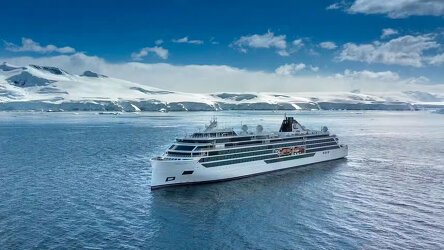
Launched in 2022, the Viking Polaris is Vikings' newest expedition ship, part of a fleet of award winning, state of the art ships built for exploration in sensitive environments. Read more

Viking are destination experts. With no casinos or children on board, you can be assured that the focus is firmly on enrichment and education. Read more
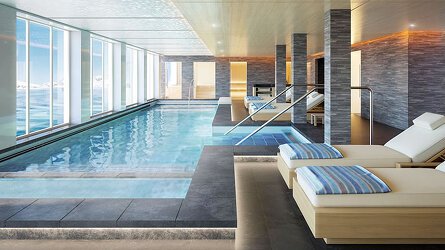
After a day of exploration or just to enhance the relaxation of a day at sea, the on-board Spa will leave you feeling recharged and revitalized. Read more

Viking offer six on board dining options. Beer, wine and soft drinks are available with lunch and dinner at no additional charge of fee. Read more

Viking proudly includes all that you need and nothing you do not. A variety of features and services are standard inclusions on your cruise. Read more
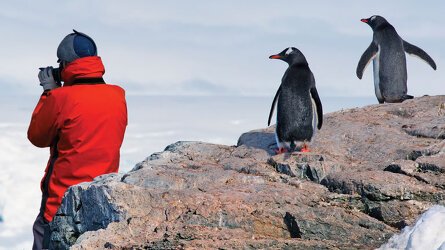
Viking include one complimentary shore excursion in every port of call. Enjoy included experiences around the world. Read more

Brochure
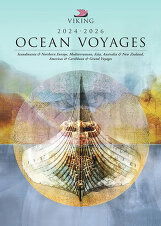
Viking Ocean Cruises (2024-26)
Availability Click on prices below to view cabin upgrades and details
Tour & cruises prices are per person. Prices shown have savings applied, are subject to availability and may be withdrawn at any time without notice. Prices and trip information are correct at the time at this point in time, however are subject to confirmation at the time of booking and are subject to change by Viking. For cruise itineraries, cabin images are sourced from Viking. These should be treated as indicative only. Cabin inclusions, upholsteries and room layout may differ to the image(s) shown depending on the ship selected and your sailing dates.
Similar Cruises
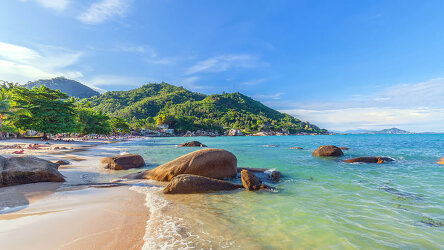
85 Days Sydney Barcelona
Operated By: Viking
